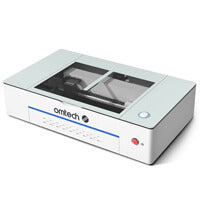






For a laser engraver, you'll typically need design software like Inkscape or Adobe Illustrator and control software such as LightBurn or LaserGRBL to run your projects.
Laser cutting is widely used for industrial fabrication of precise parts, the production of custom signage and displays, rapid prototyping in product design, intricate architectural models, and creative decorative arts and crafts.
Starting a laser engraving business at home involves several key steps:
Identify your target market—whether it's custom gifts, home decor, signage, or industrial components—and research your competitors.
Develop a clear business plan outlining your budget, pricing strategy, marketing approach, and growth goals.
Invest in a quality laser engraving machine and ensure you have the necessary design software (such as Inkscape, Adobe Illustrator, or LightBurn) to create your designs.
Establish a dedicated, well-ventilated workspace that complies with local safety and zoning regulations.
Secure any required permits or licenses, and consider business insurance to protect your investment.
Create a professional website and leverage social media to showcase your work, attract customers, and build your portfolio.
Yes, most laser engravers require a computer to run design software and control the machine, although some models offer built-in interfaces for direct operation.
A laser cutter is versatile enough to manufacture a broad range of products—from custom signage and decorative home accents to precise industrial components, prototypes, intricate puzzles, models, and personalized gifts.
Laser beam machining is a broad term that encompasses any process using a focused laser beam to remove, modify, or join materials, including cutting, drilling, engraving, and welding. In contrast, laser cutting is a specific application of laser beam machining that precisely slices through materials by melting, burning, or vaporizing them along a predefined path.











































